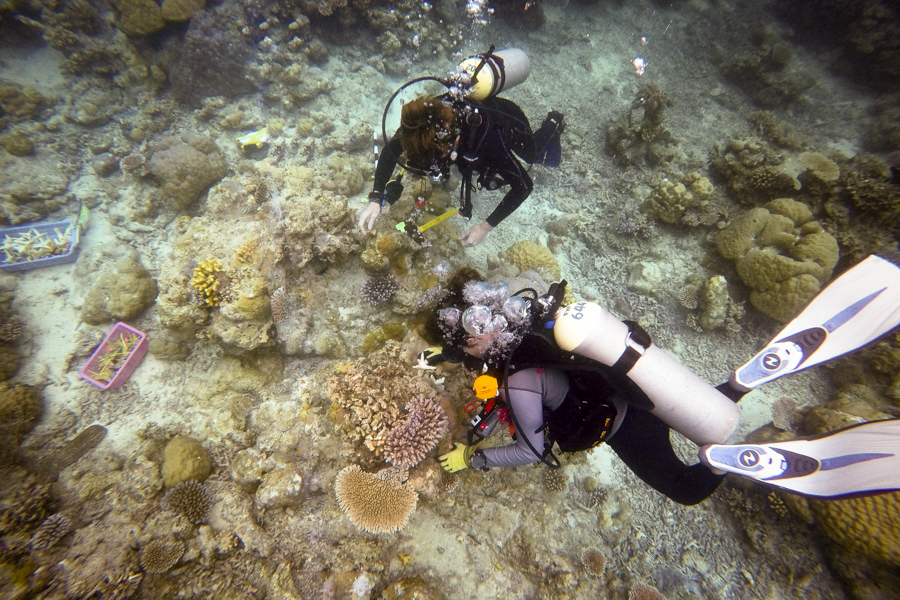MCRI Research Archive
Below are the research projects (in PDF form where available) that the Aquarium of the Pacific has been involved in since the inception of MCRI.


Sea Turtle Tagging
As of October 2006, the Aquarium of the Pacific, with the cooperation of the National Marine Fisheries Service and others, has released three green sea turtles with satellite tracking tags into the waters of the Gulf of California and off Southern California. Data was received from one of the released animals for over ninety days and allowed thousands of Aquarium visitors to track its movements and learn more about the habits and behavior of sea turtles.

Sea Turtle Necropsy Workshop (2004)
Dr. Lance Adams and officials from the National Oceanic and Atmospheric Administration National Marine Fisheries Service conducted a two-day workshop which consisted of classroom lectures and hands-on practicals, aimed at instructing veterinarians and stranding center managers in the proper methods of conducting necropsies and preserving tissue samples from dead sea turtles.

A Retrospective Study of the Diseases of Sea Dragons (2004)
The Aquarium of the Pacific submitted more than forty-five samples that were used in this study. This is the groundwork for understanding the captive health management of this rare species and may have important conservation impacts. Thirty-four diseases of weedy sea dragons and twenty-eight diseases of leafy sea dragons were described.

North American Captive Harbor Seal Phocid Distemper Virus Survey (2004)
Phocid distemper virus (PDV) is an important disease of free-ranging marine mammals and a potential health concern for introduction into captive phocid collections. Prior to this study, no comprehensive serosurvey of the 129 captive harbor seals in North America for this virus had been performed. The Aquarium submitted serum samples from its three harbor seals to support this project.

Sandtiger Scoliosis Project (2004)
Aquarium of the Americas’ tissue samples from two clinically affected sand tiger sharks, one from the Aquarium, were analyzed. The presence of a previously unidentified pigment crystal was identified in all the shark samples.

Clinical Research Using a Neonicitenoid (Capstar, Nitenpyram)
Current treatment for this Lernea sp. parasite (arthropod) requires the use of toxic materials that are hazardous to the environment, staff, and to sensitive animals in aquariums.

Clinical Research Using Regranex to Treat Head and Lateral Line Erosionsin Marine Fish (2004)
The purpose of this study was to develop a more practical and cost-effective protocol for the treatment of HLLE in fish using Regranex.

Evaluation of the Breathing Patterns of Normal and Respiratory Diseased Olive Ridley Sea Turtles
In 2003 the Aquarium transported two normal Olive Ridley sea turtles to the University of California Irvine to serve as controls for the respiratory disease turtles used in the study. The turtles were attached to a custom pnuemotachography mask to measure the components of the respiratory cycle.

Vitamin D Levels in Green Sea Turtles (2003)
In cooperation with Shark Reef at Mandalay Bay, the Aquarium of the Pacific participated in a study aimed at determining the relationship between a sea turtle’s access to UV light and its ability to produce and metabolize vitamin D.

Molecular Phylogeny of Lorikeets (2003)
The Aquarium of the Pacific contributed tissue samples to this researcher who was conducting studies aimed at determining the phylogeny of this distinct group of psittacine birds.

